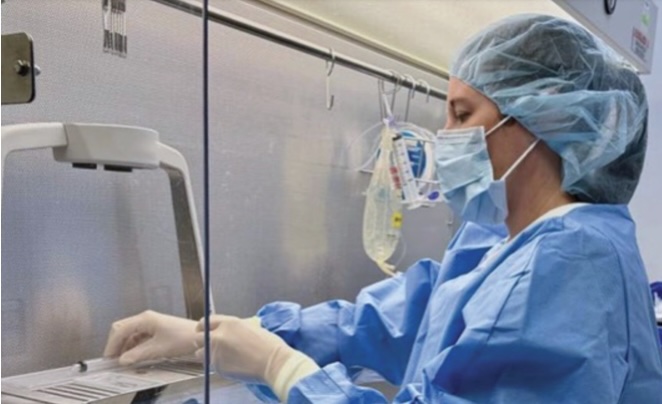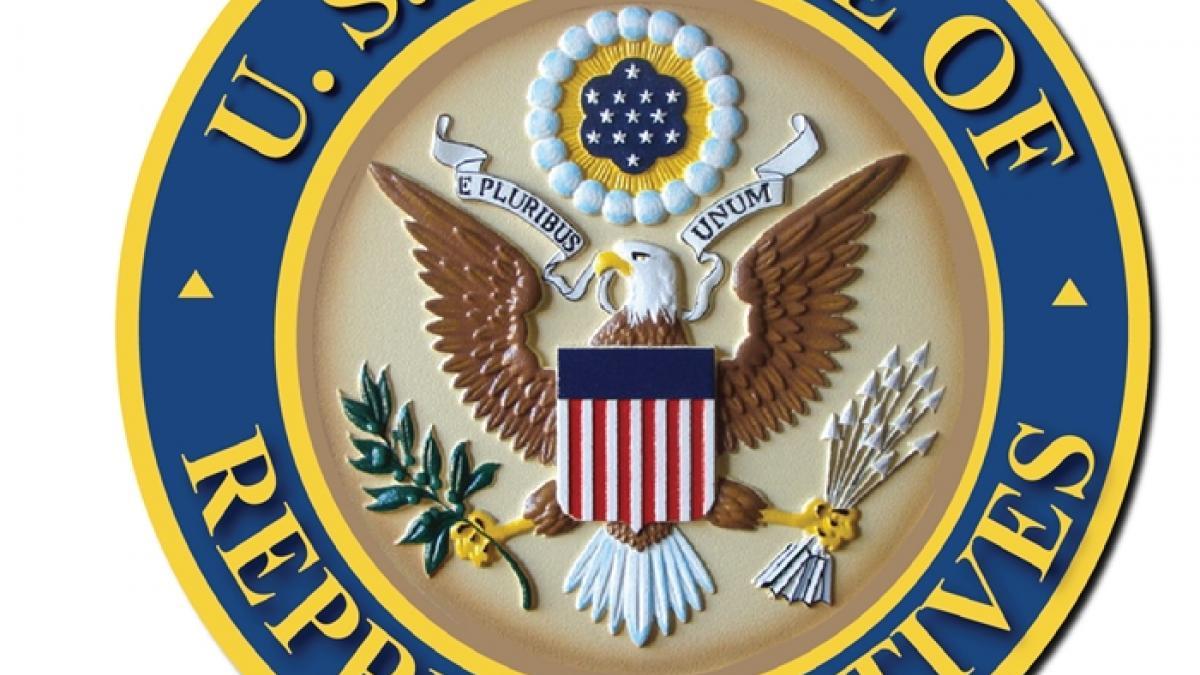In the News

From HealthcareIT News, October 13, 2021
Patient safety advocate Mark Neuenschwander is now working to make hospital intravenous therapy as safe as humanly – and robotically – possible.
Mark Neuenschwander is founding director of the THRIV Coalition. He is a longtime patient safety advocate and academic responsible for hospital bar coding and other initiatives. He and THRIV now are focused on IV robotics.
Neuenschwander is also partially responsible for the FDA Bar Coding Rule and says pharmacy automation in hospitals is the next phase of his work.
Technicians preparing IVs, pharmacists checking techs’ work and nurses hanging bags cannot verify contents simply by looking at the fluids. Nor do they have tests for confirming that the doses were accurately prepared. Only automation can ensure one removes the element of human error in providing patients the right drugs at the right dose, Neuenschwander says.
Neuenschwander sat down with Healthcare IT News to discuss the FDA rule, IV robotics and reducing errors during the IV process.
Q. You are in part responsible for the FDA Bar Coding Rule. Please explain what healthcare provider organization IT leaders need to know about it.
A. Well, I was one of a chorus of voices. For sure, mine was among the more unrelenting. Some have suggested that I was to the [bar coding] cause what Ralph Nader was to seatbelts laws – a gadfly that refused to go away. But I was not alone.
At a 1995 pharmacy conference, I observed a tabletop model of a multi-axis, bar-code-literate robot designed to automatically pick custom bar-coded medications for patient cassettes in hospital pharmacies. They were designed to retrieve meds more efficiently and accurately than humans.
In what seemed to me at the time a throwaway line, the developers noted, “One day, because of the robot’s bar-coded packaging, hospitals may someday be able to scan patient wristbands and medications for a match at the point of care.”
His words arrested my imagination and changed the trajectory of my life. Enough that for more than two decades the license plates on my car have read BARCODE.
Interestingly, the barcode was invented in 1948 – the year I was born. Growing checkout lines induced by post-war prosperity nudged the grocery industry to find technologies to speed customers through their lines. Their research also revealed high error rates from cashiers manually keying in numbers and decimals.
Industry leaders were led to believe that newly imagined electronic code readers might help in fulfilling their vision. Except barcode readers were nowhere near small enough to integrate with checkout stands.
Not until 1974 was the first retail product scanned. Even then it took another 10 years before barcode scanning was ubiquitous in grocery stores. The main barrier? Product packaging arrived on loading docks without barcodes, requiring stores to manually apply barcoded stickers to each item.
This was labor-intensive and error-prone. Eventually, to the delight of grocers, manufacturers began voluntarily applying barcodes at the source – once they discerned grocers were giving priority to purchasing coded over non-coded items.
By 1985, virtually everything landing in grocery stores arrived with barcodes. Within another five years, barcodes had moved into all retail, showing up on toothpaste at drug stores, screwdrivers at hardware stores, dresses at department stores and even items in hospital gift shops.
Point-of-sale scanning was ubiquitous. Barcodes were on everything – except on immediate drug packages being delivered to hospitals. It wasn’t until 2000 that two drug companies experimented with applying barcodes to a handful of their products.
In late 1999, unwilling to wait, the Veterans Administration Hospital in Topeka, Kansas, developed its own barcode medication-administration system. However, this involved pharmacies overwrapping each item with custom barcode packaging. Sound familiar? Like the grocery industry, the pharmacy labeling was inefficient and, more important, prone to error.
It became painfully obvious to me that, unlike food manufacturers, drug manufacturers saw little if any economic incentive to barcode their products – though one would think the safety proposition would have been convincing enough. I was convinced that getting drug companies to apply barcodes at the source would require a mandate from the FDA.
That’s when I went all in and refused to relent, until, in 2004, the FDA issued a regulation requiring that drug manufacturers include barcodes, embedded with National Drug Code numbers, on all immediate packages. This proved to be the tipping point. Finally, hospitals could use scanning technology to improve accuracy at the point of care, which had been tested and proven at points of sale.
Today’s best practices find caregivers scanning barcodes on patient wristbands and drugs for a match. Making it easier to get medication administrations right, more difficult to get them wrong. Given the proven safety benefits, there is not a hospital in the country that would go back to pre-bedside-scanning days.
Q. You and the THRIV Coalition currently are focused on IV robotics. Please describe how IV robotics work and why healthcare CIOs and pharmacy executives should be concerned with this technology.
A. The most important medication safety technology to be developed since my entering this rodeo over 25 years ago is applying bar coding to medication preparation, which THRIV calls IV-workflow management systems. Like BCMA, which ensures the right medications are matched with the right patients, IV-WMS uses similar technology to ensure the right volumes of the right ingredients match physician orders during drug compounding.
Having completed my mission around universal adoption of BCMA, I signed onto one more rodeo and founded the THRIV Coalition for IV Accuracy. THRIV has moved upstream from the bedside to the clean room. We champion the universal adoption and faithful utilization of semi-automated and fully robotic IV-WMS.
Backing up for a moment, one of the benefits hospitals experienced from the FDA Bar Code Rule involved enabling hospitals to accurately load their automated dispensing cabinets.
In 2007, Denis Quaid’s infant twins nearly died from receiving adult doses of heparin by mistake. Though the nurse retrieved the medications from the ADC storage bin assigned for pediatric Heplock, that bin had accidentally been loaded with adult Heparin – 1,000 times the dose ordered.
Today’s BCMA would intercept these errors prior to administration. Nevertheless, everything should be done to prevent dispensing mishaps upstream. Current best practices for ADC loading involve scanning barcodes on each medication, which automatically triggers dispensing machines to open the correct drawers and exact pockets for placing each medication where it belongs.
Believe it or not, a year after the Quaid episode, 19 other infants in one Texas hospital also received adult-, instead of pediatric-strength Heparin. All were endangered. Two died. This time, however, BCMA could neither have detected nor intercepted the errors.
While the human- and machine-readable labeling on the IVs matched the order, during preparation the wrong ingredients were compounded. There was no way for nurses to detect the error by looking at the clear fluids. When this happens, it is impossible for nurses to get things right. IV-WMS in cleanrooms help ensure the IV orders are compounded with the right amounts of the right ingredients.
Not incidentally, THRIV exists not only to protect patients from being harmed, but also to protect nurses from unwittingly doing harm. There is not a nurse who wants to hurt a patient. Each started their profession with an oath: “I shall not knowingly administer any harmful drug.”
Several years ago, a nurse at a children’s hospital here in Seattle unintentionally overdosed a tiny patient with sodium chloride. The child died. Three months later the nurse took her own life. We did not need to lose either of these precious lives. IV-WMS has proven to intercept hundreds of thousands of preparation errors, many of which could have done similar harm.
Q. Reducing errors through IV accuracy automation is one of your major talking points. You’ve said only automation can ensure you remove the element of human error in providing patients the right drugs at the right dose. Please elaborate.
A. Several years ago, a 62-year-old grandmother, experiencing anxiety following brain surgery, was admitted to the ER of a fine Oregon hospital. Her condition was not considered critical and her attending physician ordered Fosphenytoin, a low-risk sedative.
Pharmacy received and approved the order, which was prepared by a technician, checked by a pharmacist and sent to the ER. The patient’s wristband and the IV bar codes were scanned. A match was confirmed, the bag was hung, and the drip was started. 30 minutes later the patient was braindead.
Forensics revealed that instead of retrieving Fosphenytoin, the compounding technician unwittingly pulled Rocuronium, a paralytic agent used in surgeries. IV-WMS could have intercepted this tragedy upstream.
Some IVs make their way from the manufacturer to the bedside without manipulation, ready to administer. Think Coronas or hard lemonade that wind their way from the bottling plant to the bar where they are opened in front of the customer. You know what you are getting.
THRIV argues that such IVs should be purchased and used when available and affordable. Then there are the IVs that require compounding multiple ingredients in the pharmacy. Sometimes called “cocktails,” these require that technicians carefully follow precise recipes.
Now, if a bartender gets a mojito wrong, no harm, no foul. You probably will get a free drink. Not following an IV recipe down to the T, however, can result in harm or death.
With the dip of a straw, a bartender performs a taste test and knows if an ingredient is missing or if they included too little or too much of any one thing. Nurses have no test for discerning what’s in the IV they are about to hang. They simply must trust that what the label and barcode display is what’s in the syringe or bag. So, the pharmacy better get it right.
Yet, a 1999 five-hospital study on manual IV compounding showed a 9% error rate, with most of the errors involving incorrect ingredients and/or volumes. While one may think that study may have reached its beyond-use date, it should be noted that most hospitals are using the same manual systems today that they were four decades ago.
Imagine if Amazon had an error rate of 9%. They’d be out of business. One of their executives here in Seattle told me their fulfillment error rate was south of 0.1%. I think it’s reasonable to assume that compounding error rates should be chasing zero. Similar to Amazon’s fulfillment technology, IV-WMS is helping hospitals get there.
To this end, THRIV has created a Technology Checklist that outlines five criteria we believe IV-WMS should meet or exceed, including:
- Workflow software, which guides robotics and/or technicians step-by-step through each IV recipe, not allowing compounders to proceed to the next steps until each step has been verified as accurate.
- Barcode verification scanning, forcing verification of each selected product.
- Volume verification tools to ensure the correct amount of each ingredient has been drawn and injected into each delivery container.
- Label printing, for scanning at the point of administration, produced only after all the steps have been verified as having been accurately fulfilled.
- Auto-documentation, recording and time-stamping each step of the preparation process. Serving as a flight recorder box in the event something goes wrong.
Combining these elements in robotic formats provides additional efficiencies and safety, as well as safeguards for compounding technicians subject to needle sticks and exposure to hazardous drugs. But there will always be the need for making plenty of IVs using human eyes and hands. In either category of technology, the above five criteria can and must be met by IV-WMS.
THRIV suggests it is as unconscionable for hospitals to not use these proven safety technologies as it would be for parents to not secure their children and themselves in automobile seat restraints.
I don’t recall meeting a pharmacist who doesn’t affirm that compounding should employ IV-WMS.
However, repeatedly I am told their line-item requests for IV-WMS keep being red-lined during their hospital’s budget process. This, even though implementing a semi-automated system to ensure accuracy is a small fraction of the cost of complying with USP’s technology standards for ensuring sterility in their cleanrooms. THRIV argues that like two wings of an airplane, neither sterility nor accuracy is less important than the other.
I find it instructive that after manufacturers were required to install seat belts in automobiles, it took decades for many in our nation to use them. It wasn’t until laws were enacted that buckling up for safety exceeded 70%. Even then, driver adherence varied and still varies state-by-state in direct proportion to the level of click-it-or-ticket fines incurred by violators.
We must get beyond merely viewing IV-WMS as something hospitals should do to being declared as something they shall do. THRIV will continue pleading for voluntary utilization. However, we fear too many hospitals will not, unless and until the USP requires them to use IV-WMS technology to achieve accuracy, as they require filters and air systems to achieve sterility.
In the meantime, THRIV hopes your hospital will employ reliable IV-WMS to ensure your patients receive just what the doctor ordered – the drug, the whole drug, and nothing but the drug, so help us God.
We also invite you to spend a few minutes at THRIVcoalition.org and add your good name to our compelling list of champions for IV accuracy. Meanwhile, this cowboy won’t be hanging up his spurs until bar coding in the cleanroom is as ubiquitous as bar coding at the bedside.
Twitter: @SiwickiHealthIT
Email the writer: bsiwicki@himss.org
Healthcare IT News is a HIMSS Media publication.
In the News
Be a THRIV Champion
Together we can increase IV accuracy and prevent harm, including death, by promoting the universal adoption + faithful utilization of workflow management safety systems.

